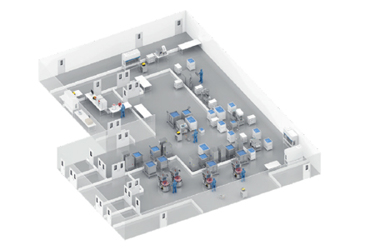When Standardization Meets Customization
By Jeremy Rautenbach, Global Product Manager for Integrated Solutions, Pall Biotech

Pharmaceutical companies can spend upwards of $2 billion developing a drug (1), but by the time it is ready to be commercialized, more than half of its patent exclusivity period is likely to have elapsed. When you also consider that only a small minority of the Phase I drugs reach the commercial scale (around 14 percent) (2), companies must take full advantage of their marketable drugs to recover their investment costs – this means getting to market as quickly as possible upon receiving Phase III approval.
An important factor in maximizing speed to market is scale up. During Phase II and III studies, companies will be manufacturing small quantities of clinical material and, typically, using equipment that will not support anticipated drug demand during commercialization. Scaling a bioprocess to accommodate larger flow rates and higher output volumes can be a lengthy and sometimes difficult task. Many of the challenges are as a result of making trade-offs between the availability of fundamental technologies (such as instrumentation, pumps and tubing) and optimally operating processing equipment within their designed ranges – this can be a fine (and time consuming) balance.
As well as expertise, a broad technology portfolio including single-use, stainless steel or continuous technologies ensures a choice of manufacturing methods are available to suit. Pall Biotech has such a portfolio of technologies and has further refined its offering by designing standard mAb and gene therapy processing platforms to assist clients with their scaleup requirements. These platforms include all hardware, consumables and interconnecting manifolds, ready-to-go. Development of such platforms has, for example, enabled Pall Biotech to reduce consumables part counts by 30 percent, ultimately translating into reduction in warehousing, increased supply chain flexibility and reduced lead times for clients. However, should these designs not fit the process requirements, they are flexible enough to be configured with relative ease. These hardware systems need to be specified correctly, integrated thoughtfully into the facility, and controlled with the appropriate level of automation to operate efficiently and safely. There are a number of questions that require careful consideration. For example, what equipment is required to support the bioprocess? What are the most optimal process conditions? What is the footprint required to operate efficiently, and what is the associated material and personnel flow within the facility? What is the best method of controlling the equipment, and how will it integrate into the facility’s automation architecture?
Get unlimited access to:
Enter your credentials below to log in. Not yet a member of Drug Discovery Online? Subscribe today.
